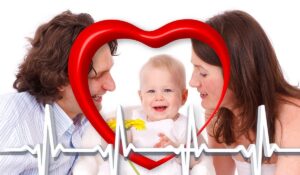What Aspects of Newborn Care are There?

Every newborn, everywhere, has a right to high-quality universal neonatal healthcare. Babies have the ability to be fed, to be kept warm, to be guarded from damage and illness, and to breathe normally. All newborns must have access to the critical newborn care that each and every baby needs during the first few days following birth. Essential newborn care includes both immediate treatment at the time of birth and crucial care throughout the neonatal period. Both at home and at a medical facility, it is necessary.
What constitutes Essential Newborn Care?
The important elements of crucial infant care are providing warmth and adequate cleanliness while handling babies, early and exclusive nursing, umbilical cord care, vision care, administering vitamin K, and immunizing (ENC).
Early breastfeeding start and exclusivity, thermal care (including quick drying and covering after delivery, optimizing skin-to-skin contact, delaying bathing, and maintaining “warm chain”), and hygiene practices are all essential components of infant care (including cord-care and caregiver handwashing)
There is strong evidence that following these advised measures significantly lowers the chance of death, especially for extremely little neonates. These behaviors can be influenced by health service interactions, particularly those related to prenatal care and hospital deliveries. Community health workers (CHWs) may play a significant role in influencing pregnant women to adopt these practices in certain contexts.
Components of Newborn Care:
A comprehensive approach for enhancing infant health through interventions before conception, throughout pregnancy, during labor and delivery, and in the postnatal period is known as Essential Newborn Care (ENC). All newborns need basic newborn care to lower the risk of sickness and to promote growth and development. Essential Newborn Care includes routine preventative newborn care, early detection of anomalies or danger signs, and treatment of life-threatening illnesses such sepsis and birth asphyxia.
1)Prior to conception:
Look for the care of further parts prior to conception such as –
Adequate diet, education, and medical care for the female child, vaccination, which includes tetanus toxoid, folate dietary supplements, birth intervals, sexually transmitted infection protection (STIs) and refraining from alcohol and tobacco usage, among other drug addiction.
2)Antenatal stage:
This includes few steps-
- Make careful to register early and make sure the first check-up is done within 12 weeks.
- Keep track of each pregnancy to ensure that at least four prenatal visits are carried out (including the initial visit for registration), taking into consideration all the crucial elements stated in section B.
- Give the TT injectable in two doses.
- Offer at least 100 IFA tablets.
Every prenatal checkup must include these essential elements:
- Get the patient’s medical history.
- Perform a physical examination; weigh the subject, take his or her blood pressure, rate of breathing, and look for pallor and edema.
- Depending on the stage of pregnancy, do abdominal palpations for fetal development, fetal lying, and auscultation of the fetal heart sound (FHS).
- Conduct laboratory studies, including hemoglobin estimation as well as urine testing for sugars and proteins).
- The grading of pallor.
Favorable elements:
- Ascertain the blood type, taking into account the Rh factor.
- The Venereal Disease Research Laboratory (VDRL)/Rapid Plasma Reagin (RPR) test should be performed to rule out syphilis.
- Check the lady for the HIV/AIDS virus (HIV).
- Measure your blood sugar.
- Perform the HBsAg (Hepatitis B Surface Antigen) test.
Counseling Assist the expectant mother with birth planning and preparation (birth preparedness/micro birth plan):
- This should involve agreeing on the delivery location and whether an attendant will be there.
3)At and immediately following birth (up to around six hours):
A skilled birth attendant using hygienic delivery techniques and supported by a supportive environment.
- Applying the control of mother-to-child transmission of HIV/AIDS (PMTCT) concepts to the infant and the caregiver.
- Finding the mother’s concerns and crises, and making the proper referrals and care requests.
- Treatment of difficulties in the mother.
- Essential preventive care of the baby: Hygienic and infection prevention, temperature establishment, vision care, cord care, early onset of breastfeeding (within one hour) without prelacteal feeds, and guidance for subsequent, common unique breastfeeding on demand day and night, and extra attention for the low birth weight baby.
- Resuscitation at the site of newborns who do not breathe adequately at delivery.
- The identification of newborns who exhibit danger indicators, their referral, and proper care-seeking.
4)Postnatal Period:
- Mother and infant should have consultations early during the first week, at minimum of before day 3, and as needed after that.
- Ongoing assistance for exclusive breastfeeding, on-demand temperature control, cord care, and other crucial preventative infant care measures.
- Ongoing application of resources for PMTCT initiatives, such as nutrition, antiretroviral medication, counseling, and feeding.
- The Ministry of Health advises postnatal vitamin A for the mother, ongoing usage of iron and folate, and intermittent treatment for malaria (where malaria is prevalent).
- Nutritional, family planning, and STI prevention and treatment counseling.
- Recognizing warning indicators and making the proper referrals and treatment requests. More people utilize the first four or five signs, especially in the community, poor or absent sucking; lethargy or inactivity—often referred to by families as being “loose-limbed” in a number of languages, fever or hypothermia, jaundice that reaches the palms and soles, extensive pustules or severe skin infection.
- Swollen eyelids with pus discharge.
- Convulsions, vomiting, abdominal distension, severe umbilical infection, a slight pus discharge may frequently be considered a small infection that can be treated locally.
5)From discharge to six weeks of care:
- All infants, whether term or preterm, LBW or not, whether in high-, middle-, or low-resource settings, should be nursed exclusively from birth until 6 months of age.
- At each postpartum visit, encourage exclusive breastfeeding among all women. ‘Provide moms who give birth by cesarean section or preterm with comprehensive support for exclusive breastfeeding.
- Find out specifically from the mother what the child consumed in the previous 24 hours before the visit. Inquire about the usage of bottles, pacifiers, local meals and beverages, formula, and water. Stooling and damp diapers should be discussed. Whenever a woman is exclusively nursing, congratulate her and urge her to keep doing so.
- Tell her that the only diet that will fully shield her child from life-threatening sickness is exclusive nursing. Explain that the term “exclusive breastfeeding” refers to consuming just breast milk.
- Confirm the mother that she is producing adequate breast milk for the requirements of her child.
- Give the mother some advice, such as to: keeping the baby in the same room as her, on her bed, or close by; and completely breastfeed the child on demand, day and night (more than eight times a day, except on the baby’s first day of life, when the infant sleeps a lot).
- If you can, watch a breastfeeding session. Make sure the mother is aware of proper posture and connection.
- ‘Ask the mother to let you know if she has discomfort, a fever, or trouble nursing.
- If the infant is not securely attached and the nipple(s) is/are painful or fissured, watch, treat, and advise. In addition to the aforementioned steps, the mother should also be advised to: reassess after two feeds (within the same day); recommend that the mother apply breast milk to the painful nipple(s) after a breastfeed; examine the infant’s mouth for thrush and treat both the mother and the baby; and if the condition does not improve, educate the mother on how to express breast milk from the troubled breast and feed the baby by cup until the breast(s).
6)Make sure the infant is warm:
- Delay taking a bath till the next day. Hold for minimum six hours if cultural considerations prevent you from doing this. Tell the mother that compared to older kids or adults, newborns require an extra 1-2 layers of clothes to regulate body temperature. It is advised to wear hats or bonnets.
- Keep the space warm, especially if you live somewhere chilly. Mother and infant should not be separated. Keep them in the same space day and night. Give the mother instructions to: » clothing or wrap the baby during the day; and » allow the infant to sleep with her or close by so that she can nurse the child at night.
- If the infant exhibits any of the following, keep an eye out for warning indications and refer for additional testing: convulsions, quick breathing (breathing rate 60 per minute), severe chest in-drawing, ceased eating properly, no spontaneous movement; Low body temperature ( 35.5 °C); fever/high body temperature (>37.5 °C).
- Send the infant right away to the hospital. After receiving emergency care, you should: » inform the mother and father of the need for a referral; » arrange safe delivery; » always send the mother with the child if it is possible; » send the referral note with the child; and » if you are able, notify the referring center by radio or telephone.
- If the mother shows any of these symptoms, she should be sent to a medical facility.
- Encourage all new moms to disclose any health issues and to recuperate after giving delivery. ‘Ask whether your breasts or nipples are puffy, red, or sore. Attempt to manage breastfeeding issues. If not, get medical attention at a facility.
- Encourage breastfeeding, good hygiene, including washing hands, using antibiotics for third and fourth-degree perineal injuries, spacing out births, diet, condom usage, early walking, light activity, rest, and iron supplements, and safe sex.
Conclusion:
In order to achieve the required impact on neonatal morbidity and mortality, key strategies to improve newborn health must be integrated with existing maternal and child survival programmes in a manner that maintains good sight of newborn health issues. These strategies also include prioritizing ENC interventions according to local needs and gradually phasing-in interventions not initially included. These kinds of tactics will have a bigger influence on neonatal death rates, which will then have a bigger impact on infant mortality rates. This will be a big step toward attaining Development Goals.





